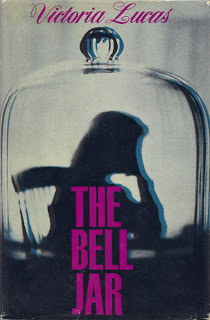This is the first post of Archana’s World – a new blog for The Rebellion in which Archana Apte will write about anything and everything. Her column will inform readers about literature, social issues, philosophical/editorial commentary, and more.

The Bell Jar is Sylvia Plath’s only novel, published in 1963. First reviews of the book were inextricably intertwined with opinions about Plath’s suicide, which occurred about a month after The Bell Jar was published. Luckily for me, I get to review the book without Plath’s untimely demise hanging over my head. I will review the novel without references to Plath’s life/death.
The Bell Jar is about the crack-up of Esther Greenwood, a brilliant and successful college writer in New York City. The reader follows Esther from New York City to the suburbs with her mother into Esther’s memories and on to a few different asylums. The novel describes the protagonist’s frustrations with being female in the 60s, the abusive mental health system, and her dealings with depression. The novel is considered semi-autobiographical, because the protagonist’s descent into madness closely mirrors Plath’s descent into depression. It is written in poetic prose and its plotline is nonlinear.
One of the book’s main themes is feminism: Esther’s fight to reconcile her identity as an independent career woman with the restrictive notions of home and family that middle-class white girls were expected to adhere to. Esther does not want any restrictions on her freedom, but the people around her seem to crush that ideal. For example, her mother, while supportive of Esther, pressures the protagonist to get married to a suitable boy. All the men in the story hinder Esther’s independence: Doctor Gordon’s indifference and forced shock therapy make Esther fear being an outcast, Buddy’s hypocrisy causes Esther to never marry, Irwin’s carelessness makes her hemorrhage when she tries to have sexual freedom. Only the women–some of the women–are decent to Esther, the most prominent of these being Doctor Nolan, a compassionate psychologist.
There is no one event that triggers Esther’s breakdown. At the beginning of the novel, Esther exhibits the apathy and isolation indicative of depression. Through a series of memories the reader learns ultimately about Esther’s resentment of her antifeminist society, which may be a factor. When she goes home to the suburbs Esther is rejected from a prestigious writing program, which sends her into a particularly bad bout of depression that lands her in various psych wards. Sylvia Plath’s visceral descriptions make Esther’s insanity seem reasonable, rational even; it is only through her actions that the reader sees that Esther is breaking up. Her sickness is most vividly described when Plath writes, “to the person in the bell jar, blank and stopped as a dead baby, the world itself is a bad dream.” Towards the end of the book, Esther starts to heal thanks to successful therapy. The novel ends just before the interview that will determine if she can leave the asylum, lending an ambiguity to Esther’s mental state and thus a fear of never fully leaving the bell jar.
Plath’s poetry is descriptive, morbid, raw, honest, and therefore unsettling; so too is The Bell Jar. The novel offers no refuge from Esther’s mind, no place for the reader to listen to the sane and convince themselves everything will be fine. The genius of the book lies in Plath’s own experiences with depression; only a sufferer could write so accurately about how it feels to be under the bell jar.
The one pitfall is that the novel, although considered literature, somehow feels like the work of an amateur novelist. Plath herself published the novel under a pseudonym because she did not consider it a “serious work.”
The entire plot of Plath’s novel is Esther’s mind: the fears and bitterness that haunt her, her worries and inadequacies, the depression that slowly unravels her sanity. Thus the purpose of The Bell Jar is to be a window into such oft-forgotten parts of the human experience, and that it does brilliantly.










Krystal Skwar • Oct 23, 2014 at 11:17 am
Great review. I wonder if it feels amateur because of Plath’s lack of confidence in herself? A psychoanalytic reading of the novel would be fun to try. People certainly said the same thing about JD Salinger’s CATCHER IN THE RYE. It was banned, and some teachers still regard it as “not literary enough”. This begs the question…what makes a novel/work “literary”? What makes it sophisticated? Amateur?
For me, it is all about the rawness and the power of the story. If it strikes a chord in me, if it moves me, it’s art. 🙂
Mrs. Jordan • Oct 16, 2014 at 11:26 am
Great book review! I loved The Bell Jar when I first read it way back when I was in high school (yes, during the good old 70s). I was also struck by the way Esther (and presumably, Sylvia Plath in real life) was struggling with mental illness, yet there was a lot of truth and insight in how she saw the world: the phoniness of many people, the lack of real love and caring, the stifling expectations of society. It is a classic book and I am very glad you read it and are sharing it with others! It’s always fun to talk and read about good stories 🙂